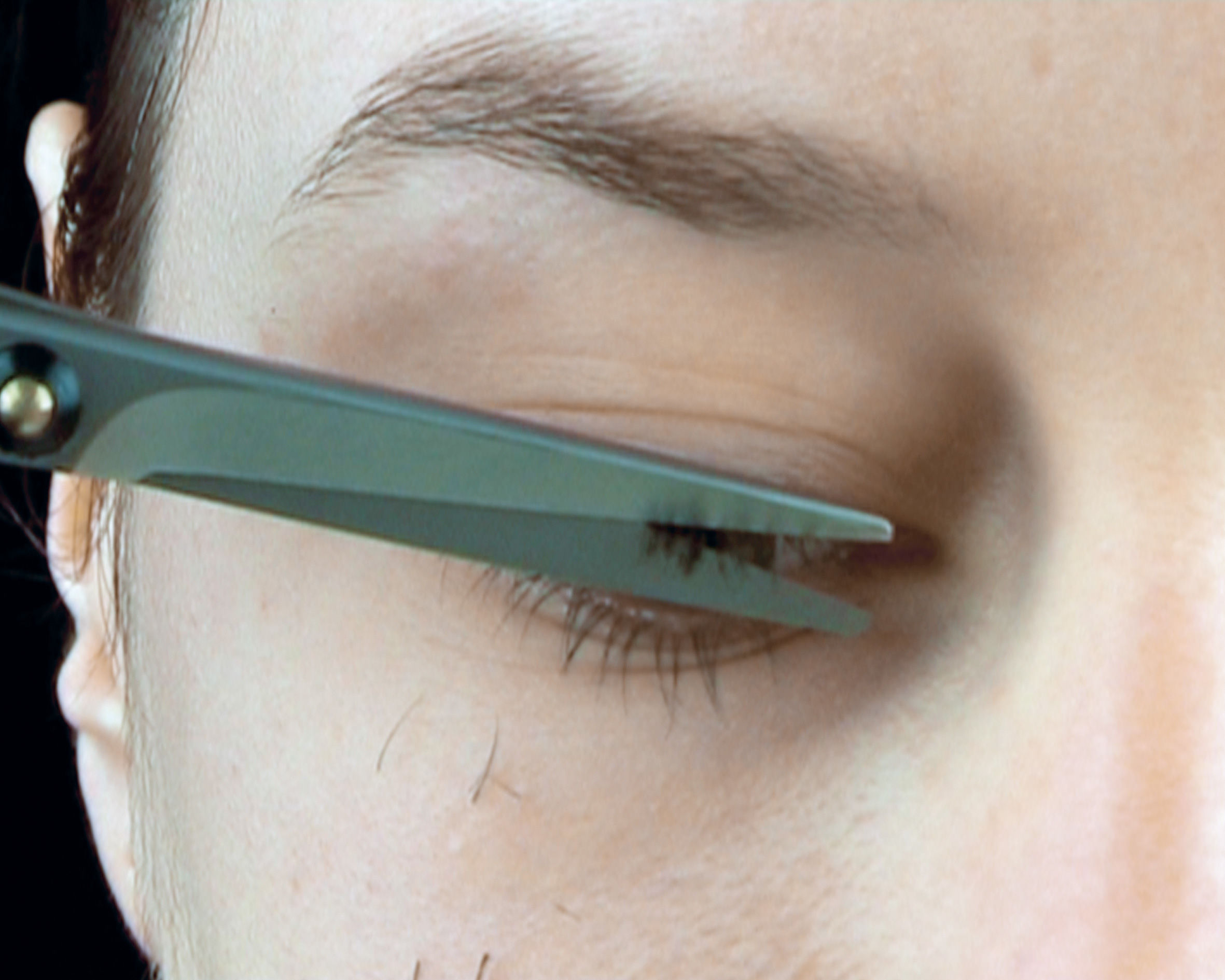MOOZ – audiovisual arts collection
Crying about the passing of time
2005, 0:37 Min., Color
Concept and realization: Sonja Engelhardt
Production: Academy of Media Arts Cologne
A small archaeology of (not) crying
1865
Lewis Carroll’s Alice in Wonderland scolds herself that she really must quit crying at once. But it is too late. She has to swim through a sea of her own tears and laments, “I shall be punished for it now, I suppose, by being drowned in my own tears! That will be a queer thing, to be sure! However, everything is queer to-day.”
1929
In Luis Buñuel’s Un Chien Andalou a man sharpens a razor. A cloud cuts across the moon. The man opens the left eyelid of the woman sitting before him and cuts across her eyeball. The eye cries from itself.
ca. 1932
In Man Ray’s Larmes five glassy tears weep from eyes framed by perfectly mascaraed eyelashes.
1966
In Andy Warhol’s Chelsea Girls, Nico, sitting with Eric Emerson and her son Ari Boulogne in the kitchen, cuts her bangs with extreme meticulousness for almost half an hour. Snips of hair fall onto her face. “You have hair on your face,” comments Emerson. There is no crying.
1971/2
Dieter Roth cries a Lake of Tears out of printer’s ink in the pennysaver of the city of Luzern.
1973/4
In Action Psyché Gina Pane doesn’t cry at all. Blood trickles from the cuts on her eyelids.
1978
Tuxedomoon’s Creatures of the Night have forgotten how to cry. The eyes stay dry.
1987
The tears in Les larmes d’acier by Marie-Jo Lafontaine turn out to be a misunderstanding. Tears of steel are bombs, not salty water that flows from the eyes.
2004
Barbara Kruger’s Blind Eye poster features the perfectly mascaraed eyelashes from Larmes. The tears come from a pipette.
2005
The protagonist in Sonja Engelhardt’s Crying about the passing of time not only goes without tears but also without eyelashes from now on.
2007
Ming Wong’s Petra von Kant cries more beautifully than Fassbinder’s.
2007
In Rhythm King and Her Friends’ No Picture of the Hero no tears are shed for heroes and fake eyelashes are turned into moustaches.
Text – Katrin M. Kämpf
Sonja Engelhardt (*1975 in Mönchengladbach) lives in Berlin.
2010 MFA, Studio Art, New York University Steinhardt School, New York City
2006 Diploma, Audiovisual Media, Academy of Media Arts, Cologne
2005 Kunstakademie Düsseldorf




